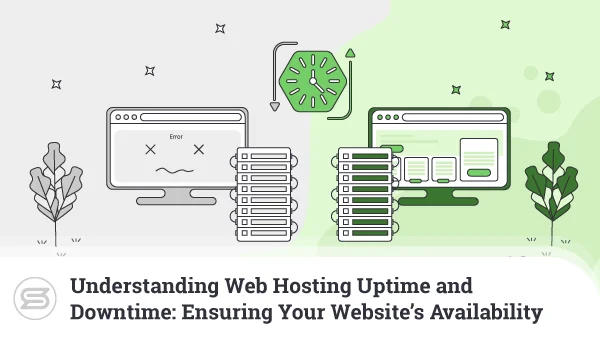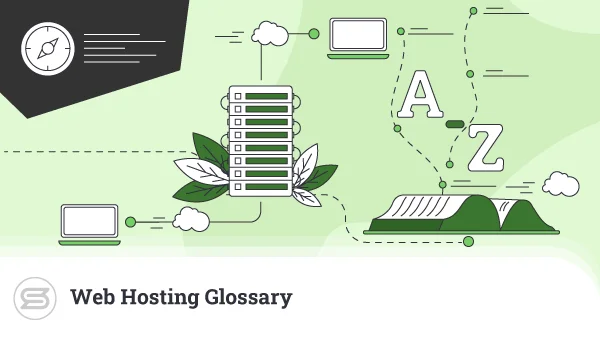The Power of cPanel: A Comprehensive Overview of Features and Benefits
cPanel was first released in 1996 – nearly three decades ago. A lot has happened since then. The website-building business has not only grown – it has evolved. During this time, we’ve seen the emergence of applications like WordPress that have transformed the landscape completely.
The hosting industry has changed a lot as well. Many platforms similar to cPanel have popped up, some of which are distributed under an open-source license. Yet, cPanel continues to be one of the most popular solutions of its kind.
Why do people like it so much?
Because it gives website owners a comprehensive set of tools and features that make their lives easier. Today, we’ll have a look at some of them.


Your Website with Entry Cloud
Introduction to cPanel
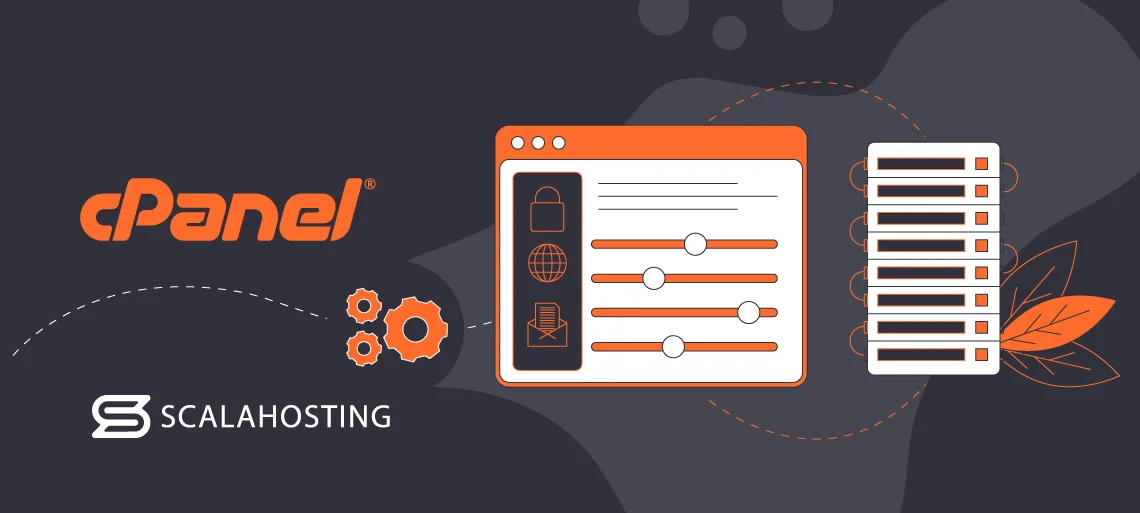
To understand cPanel’s role in your project’s development, we should look closely at what a typical web hosting service does.
Its purpose is to provide the hardware resources you need to operate normally. If you use a shared hosting account, these resources are utilized by multiple people simultaneously. If you have a virtual or a private server – they’re reserved for you only.
The hardware isn’t enough, though. Every hosting account has multiple software platforms and applications critical for your site and the services surrounding it. For example, you need a web server to process incoming requests, an interpreter to enable the server to read your code and act accordingly, a database management system to deliver dynamic data whenever and wherever it’s needed, a mail server that sends and receives emails, etc.
Theoretically, you can work with all these software services via the command-line interface (Terminal). However, you can imagine this would be a bit of a nightmare if you’re starting to build your first website.
Every time you need to do something, you have to go to Google, find the right command, and hope you use it correctly. A single typo can have serious consequences when working with the command-line interface, so you must be extremely careful.
Even experienced site administrators with extensive knowledge of how commands work could waste a lot of time fiddling with the Terminal. The goal of cPanel is to make this process a lot more efficient.
The platform comes with a graphical user interface (GUI) through which you can perform dozens of essential tasks for developing your project with mouse clicks rather than commands.
CPanel is shipped alongside WHM (short for WebHost Manager) – a multi-featured server management tool. The server owner uses WHM to configure various core settings and services. Through it, they can also create cPanel accounts.
The cPanel account is used by the website owner for things like creating email inboxes, managing files and databases, installing site-building applications, adding and managing domains and subdomains, and many more.
cPanel’s longevity is a testament to the management platform’s ability to adapt to various user needs. Quite a few features have been implemented over the years, completely transforming how people go about website development.
For the purpose of clarity, we’ll divide them into several different categories.
Website Management
cPanel was built primarily with website owners in mind. Therefore, it’s no surprise that the control panel can help you quickly get your project on the road. It starts with the installation of a site-building application.
The Softaculous auto-installer
Around 67% of site owners prefer to build their websites using an application like WordPress, Joomla, or Drupal. Before they start working on their projects, they need to install the app on their hosting account.
The process depends on the app itself, but if you do it manually, you’d need to upload and extract the archive on the server, create a database, and edit the primary configuration file to ensure the two work together.
If you know what you’re doing and have done this before – you can probably do this in about ten minutes.
With Softaculous, it will likely take about 30 seconds, even if you’ve never tried installing a web-building app. The one-click installer is a third-party tool that supports other control panels as well. However, because cPanel is one of the most popular platforms of this kind – the integration is particularly easy to get to.
A menu on cPanel’s homepage usually displays the most popular site-building apps. If what you’re looking for is not there, you can browse through the available categories and solutions. In total, Softaculous’s catalog contains over 300 applications, so you will likely find a solution that fits your needs.
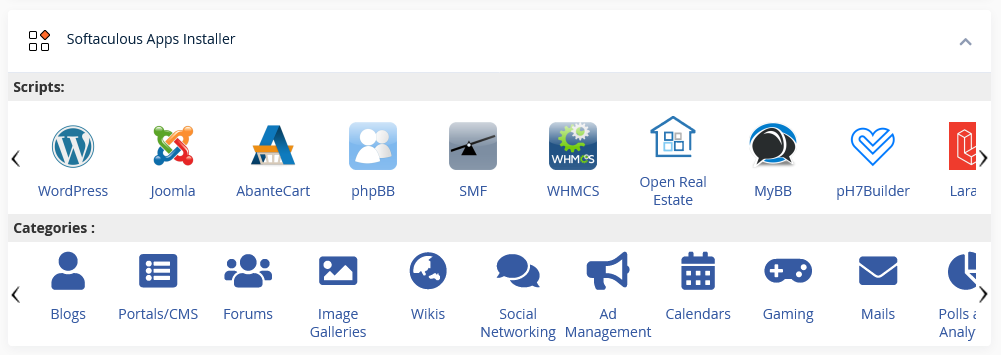
When you find the app you’re looking for – you can install it with a few clicks. All you need to do is pick the installation folder and the admin panel’s username and password.
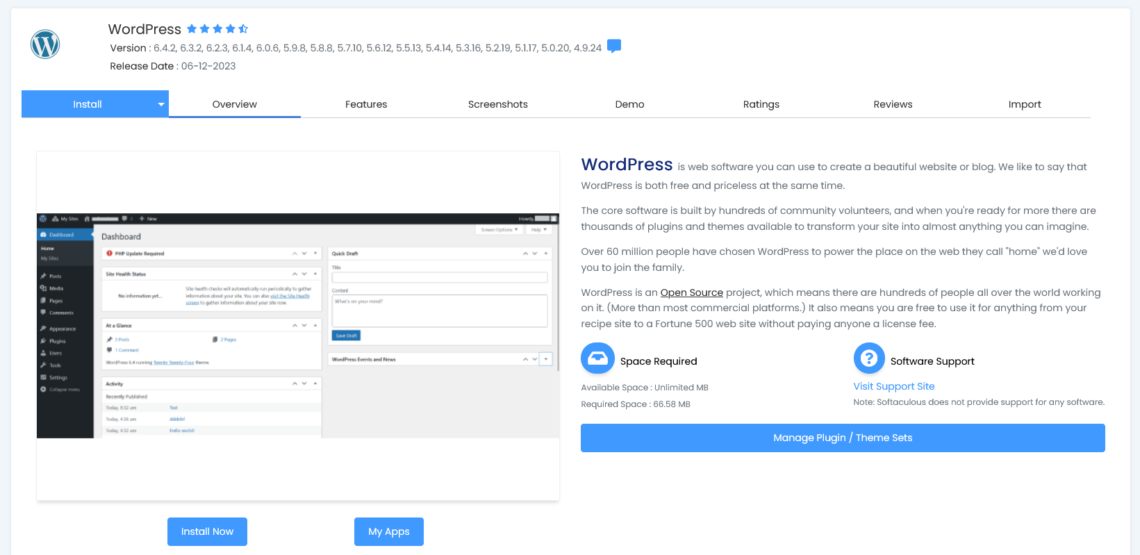
Instead of spending hours figuring out how everything works, you can focus on the important business of getting your site going. In that respect, the app auto-installer can be indispensable.
Domain management
Your domain can help you build your business around a recognizable brand. However, before it does that, it must be configured to resolve to the right content. cPanel has the tools for the job.
The server owner can enable addon domains on your cPanel account, allowing you to manage multiple websites from the same cPanel dashboard. The projects are hosted in individual document roots, and as long as the domains are pointed correctly, they will appear as completely separate entities to the users.
You can also set up subdomains and have a separate ecommerce section of your site under shop.domain.com, for example. All this is configured through an intuitive interface that should be easy to use, even for a complete novice.

A domain or a subdomain must also resolve correctly. This starts with the nameservers, which are configured via the domain registrar. However, there are additional DNS records that are set through cPanel’s Zone Editor. With them, you can configure mail routes, limit the threat of email spoofing, map one domain to another, and many other useful actions.

Support for redirects and parked domains gives you further domain management flexibility and ensures your website is easily accessible.
Software management
In addition to installing website-building applications, cPanel can help you configure your hosting environment to guarantee the best possible performance and security. For example, you have tools that let you switch the PHP version, edit the php.ini file, enable various extensions and modules, etc.
With the Application Manager, you can deploy custom applications on your account, and a specialized tool optimizes your site’s loading speeds by enabling compression. Processes that normally take a lot of research and/or a relatively advanced level of technical skills are dealt with in a few short steps.

Having complete control over the software powering your project streamlines the development process and ensures you’re up and running as quickly as possible.
Analytics and SEO
It’s not just about getting the ball rolling, though. cPanel is also designed to help you manage and develop your site after the launch. Analytics is one of the most critical aspects of building a project and ensuring it’s running in the right direction.
You must obtain as much information as possible regarding the people visiting your website at any given time. You obviously want to know how many users land on your pages – this is the first metric that comes to mind when estimating how popular a website is. However, you must also determine how much time they spend interacting with your site, how many pages they visit, and which links they click the most.
You can use all that data to identify your target audience, find out what they want and search on Google, and ensure your website is one of the first things they see on the results pages.
The ultimate goal for every website owner is to ensure as many people as possible visit, use, and enjoy their project. The tools cPanel has in its Metrics section are excellent sources of information that can be instrumental in your efforts to achieve that goal.
You have AWStats – an open-source system that analyzes logs and other data and compiles detailed HTML reports showing you a range of metrics sourced from your web server, mail, FTP, and other services running on your account. In addition, you can see how many visitors have accessed your site, how much bandwidth you’ve used, what sort of errors they’ve encountered, etc.

After you get all the stats, you can use cPanel’s SEO features to improve them. You can check how well you rank on Google and use tools that help with things like link building and email marketing to push your site closer to the top of the results pages.

There are a few additional WordPress-specific utilities in this section, and depending on the host, you may see other services integrated into cPanel. They won’t necessarily give you an end-to-end SEO and marketing solution but can be an excellent source of information that complements your strategy.
File and Database Management
Files and databases are at the core of every modern website. Without cPanel, you’ll have to use an FTP client to upload, download, and manage files on the server. And if you want to create and modify databases – you’ll have to learn a few commands.
Needless to say, the browser-based graphical interface makes things a whole lot easier.
Files
The File Manager has been an integral part of cPanel for years, providing users with a comprehensive alternative to the traditional FTP connection. Instead of opening a separate client application and logging in, you have a browser-based system that gives you even greater freedom.
You can view the files and folders on the server, modify their permissions, and delete the ones you don’t need. You can also upload more data, and with the built-in text editor, you can tweak code and edit configuration files on the go, streamlining a broad range of different tasks.
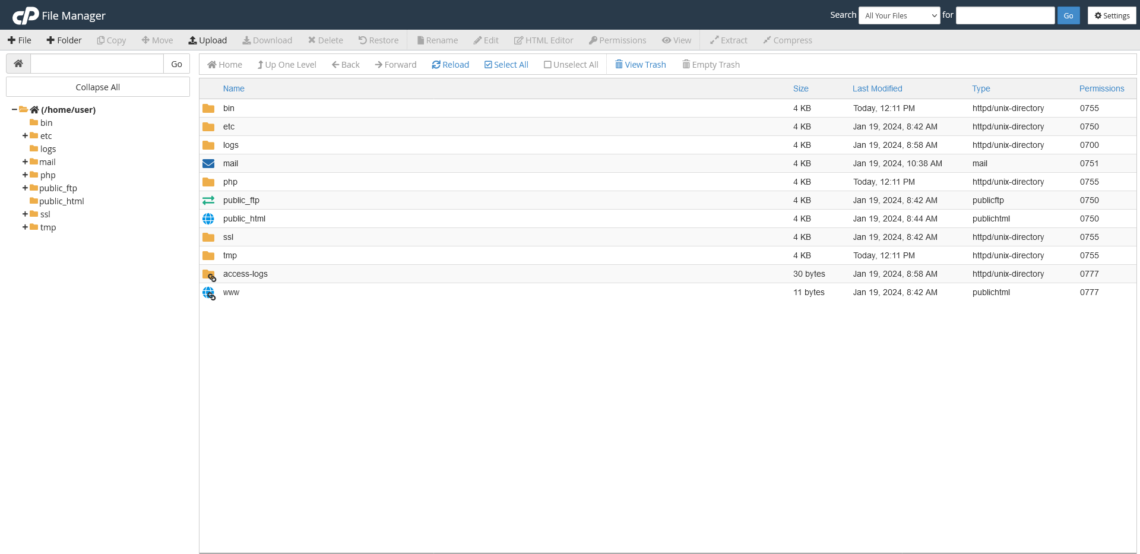
Outside the file manager, you have a specialized tool letting you scale, convert, and create thumbnails of your image files. Git version control is supported, and you can get detailed storage usage information.

Despite the File Manager’s advantages, some tasks are best performed via FTP. Through cPanel, you can ensure they’re carried out as efficiently as possible. You can set up new FTP accounts, modify access levels and quotas, and restrict specific directories. There’s even a tool that lets you review and terminate active FTP connections as well.
Databases
Setting up a database in cPanel is as easy as picking a name and creating or assigning a user. Both MySQL and PostgreSQL databases are supported, and the interface for setting them up couldn’t be more straightforward.
Users and databases are available and can be managed through a single page. For that purpose, you have phpMyAdmin and phpPgAdmin – a couple of all-in-one management solutions for MySQL and PostgreSQL, respectively. MySQL users can even set up and use a remote database server.

Overall, the range of database management options is pretty comprehensive. Even the less experienced among you should have no issues carrying out most of the tasks, and the point-and-click interface ensures everything is quick and easy to access.
Backups
In terms of backups, cPanel offers a range of options that give you impressive flexibility when you need to save secure copies of your data or restore them.
You can create a full account backup with as little as a few clicks but can also back up your document root folder, the home directory, the databases, or the email forwarders and filters. A Backup Wizard gives you a step-by-step guide that makes the process even more straightforward.
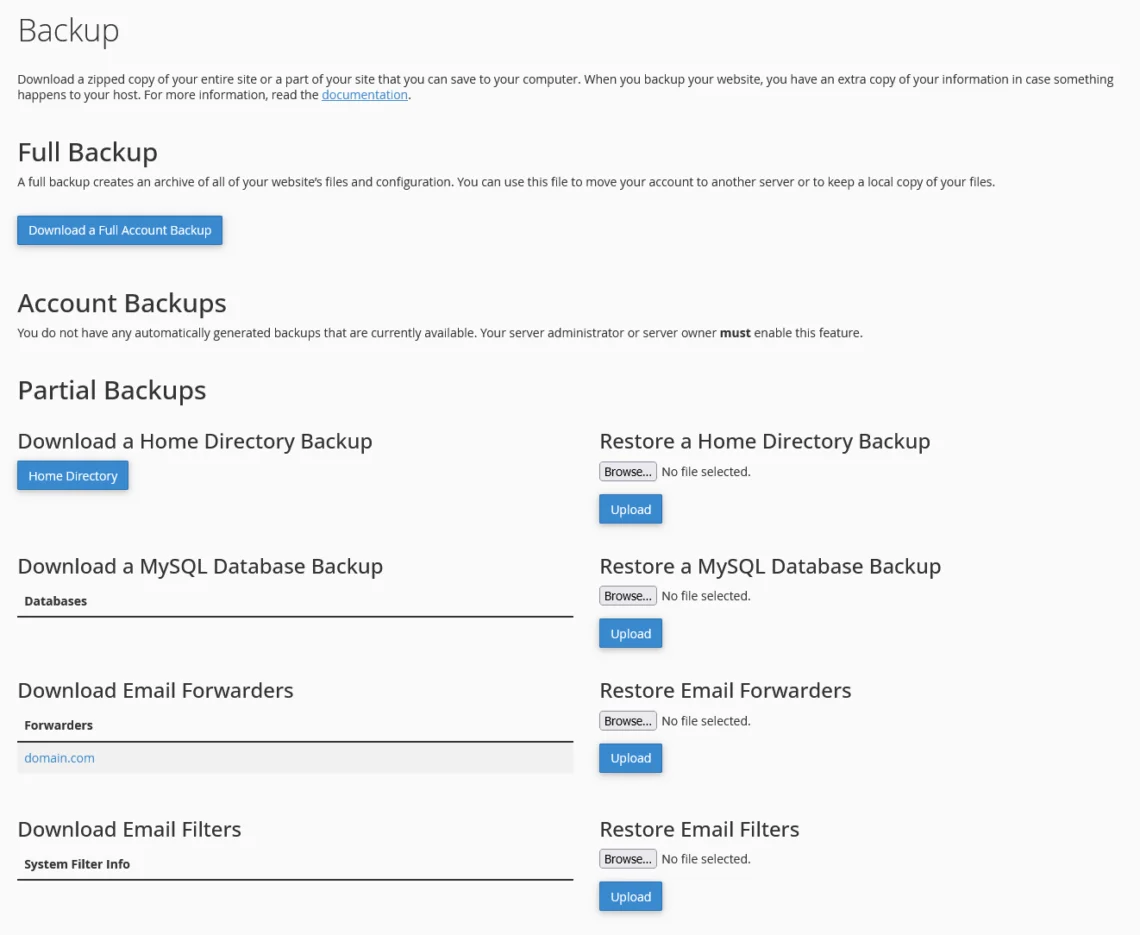
The exact options you get depend on the services integrated into your hosting account. For example, users of ScalaHosting’s self-managed cloud VPS services can use the R1Soft server backup manager – a proven backup and restoration solution.
Email Management
The email service is a part of almost every cPanel hosting account, so it’s not surprising that you get various tools to help you create, access, and manage inboxes.
Setting up a new email account is as easy as thinking of a unique address associated with your domain. You can either set the password yourself or let the user choose it.
You can also set a storage quota for the account and change how it looks out of the box.
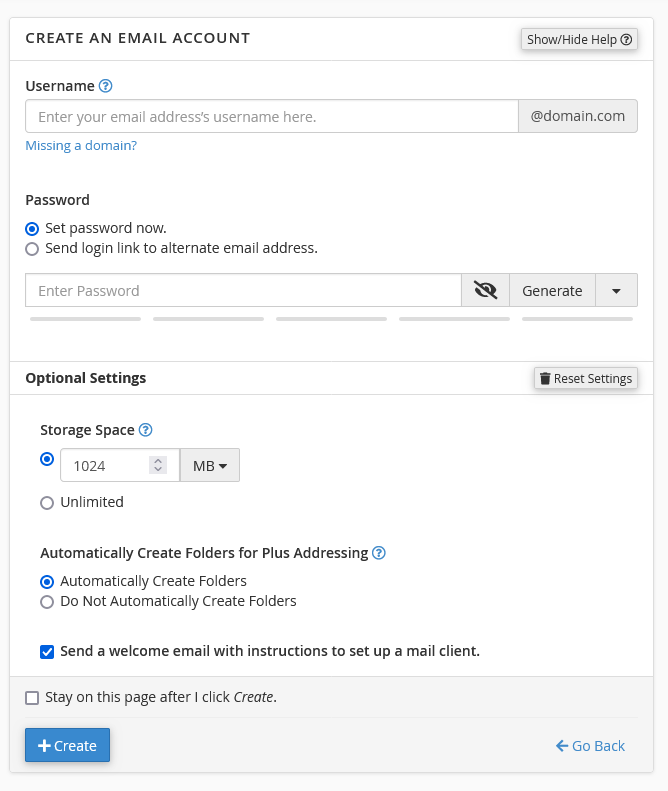
Quite a few email hosting services, including those offered by ScalaHosting, are also based on cPanel, so you won’t be surprised to learn that there are many other mail management tools.
For example, you can use the address importer to quickly get things going when moving from another provider. Forwarders ensure incoming emails are redirected to the right inbox, and the spam filters can help you get rid of junk messages.
You’ll struggle to think of a feature that hasn’t been implemented yet, and as usual, all the tools are pretty straightforward to get used to.

Security
You can’t talk about building a web development without mentioning the problem of security.
Still, it’s safe to say that if you use cPanel to its full advantage, you have a lot less to worry about in that respect. This is particularly impressive when you consider how many threats a website owner must think about these days.
First, you have the measures to ensure your cPanel account security. The built-in password generator in WHM’s interface lets you secure your cPanel users with minimum effort. It doesn’t completely eliminate the risk of someone setting up a poor password after that, but it does limit it to a large extent.
The same is true when you’re creating new email inboxes.
Two-factor authentication is usually disabled by default, but it can easily be turned on by the server owner. Setting it up is as easy as clicking a few buttons and scanning a QR code, and although it adds another step to the login process, using it is definitely worth it.
The security of the website itself has not been ignored either. Softaculous has an auto-update function, meaning your CMS core and all themes and plugins can receive the latest patches as soon as they’re released.
cPanel also gives you a quick and easy way of setting up an SSL certificate and ensuring it actively encrypts the connection between your site and its visitors. You can create additional cPanel users and limit access only to the tools they need to do their job. This way, you can control who does what on your account.
You can use cPanel to configure SSH keys for your account. Using keys instead of a password is the more secure option, and setting them is a lot easier if you opt to use cPanel’s interface. The control panel also has an IP blocker, letting you limit website access for certain people.
The Directory Privacy and Leech Protection tools are two additional security instruments cPanel employs to help you protect your data. The former lets you password-protect directories on your account. With the latter, you can set a maximum number of logins within a two-hour period to limit any suspicious activity on restricted parts of your website.

cPanel Price Hikes and Product Alternatives
cPanel has remained very near the top of the most popular web hosting control panels because, throughout its existence, it has managed to adapt to website owners’ requirements. Its extensive list of features and intuitive interface have made it the go-to solution for thousands of users.
Nevertheless, the competition from other server management platforms is getting stiffer by the minute, and thanks to a few unexpected updates to cPanel’s pricing policy, quite a few people are now looking for an alternative.
The changes began in 2018 when the company developing cPanel was acquired by Oakley Capital – a private equity firm interested in many technological ventures, including some of cPanel’s competitor control panels. About a year later, Oakley announced a new pricing structure for cPanel, which meant the licensing fees for both hosting providers and website owners shot up.
The backlash was significant, and a few tweaks were made, but Oakley followed through with their plans. Site owners and hosts were forced to swallow the higher prices or look for an alternative.
Since then, price hikes have become something of a yearly event for cPanel. Despite this, some people are still adamant that they need cPanel’s features and convenience and continue to look for hosting services that work with it.
However, others are looking for alternatives. At ScalaHosting, we can understand both groups.
We’ve been in the industry for long enough to know what cPanel brings to the table. At the same time, we believe good service should be not only powerful but reasonably priced as well. That’s why, over the last few years, we’ve been working on SPanel – an all-in-one management platform designed to help you efficiently run your very own server and the websites hosted on it.
We’ve put all our expertise and experience into creating a control panel that caters to the requirements of projects of all shapes and sizes.
We’re not doing it on our own, though.
SPanel’s development is steered by a feature request platform, where our customers share with us what they want to see. Our team keeps track of the most highly requested features and puts them in the pipeline. We believe this is the way to develop SPanel in the right direction and make it useful for as many people as possible.
It works on both virtual and physical servers. Users who sign up for one of ScalaHosting’s managed VPS plans get SPanel for free, and if you have a server of your own – it is available under one of a range of competitively-priced managed and self-managed plans.
Nevertheless, we understand that SPanel hasn’t been around for as long as cPanel, so we give potential customers a chance to try it out before deciding whether this is the right management platform.
All you need to do is contact us and request a demo.
Conclusion
cPanel has played a critical role in the launch of thousands of websites. Its extensive list of tools and features continues to grow as the web hosting industry evolves, and so far, its developers are staying on top of users’ demands.
In recent years, however, the competition has been getting stiffer, especially after Oakley’s pricing policy changes.
The end result is that cPanel is under more pressure to keep up. Is another industry leader on the rise?
FAQ
Q: What is the purpose of cPanel?
A: cPanel is a suite of tools that allow you to perform various tasks related to the management of your website and the services surrounding it. You can use it to do anything from creating email accounts to exporting databases or switching to a newer PHP version through an easy-to-use graphical interface.
Q: What are the main benefits of cPanel?
A: cPanel’s primary goal is to ensure that even complete novices can control their websites through an easy-to-get-used-to, intuitive interface. Website owners get a comprehensive suite of tools that give them all the functionality they need to develop and run their sites efficiently.
Q: What are the main features of cPanel?
A: cPanel’s comprehensive set of features helps you deal with both simple and complicated tasks. They do everything from installing content management systems through setting up and managing email inboxes to changing core web server settings.


